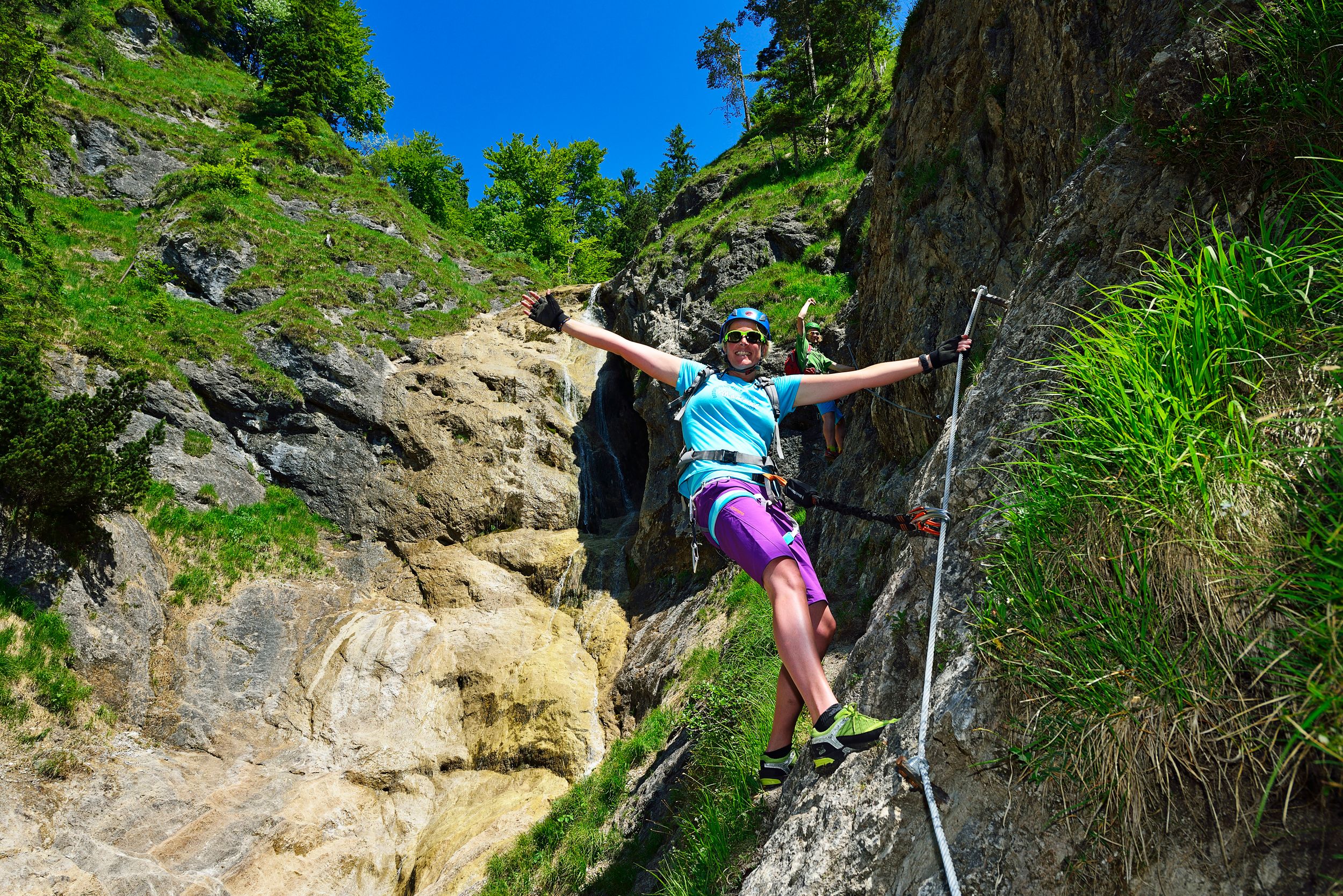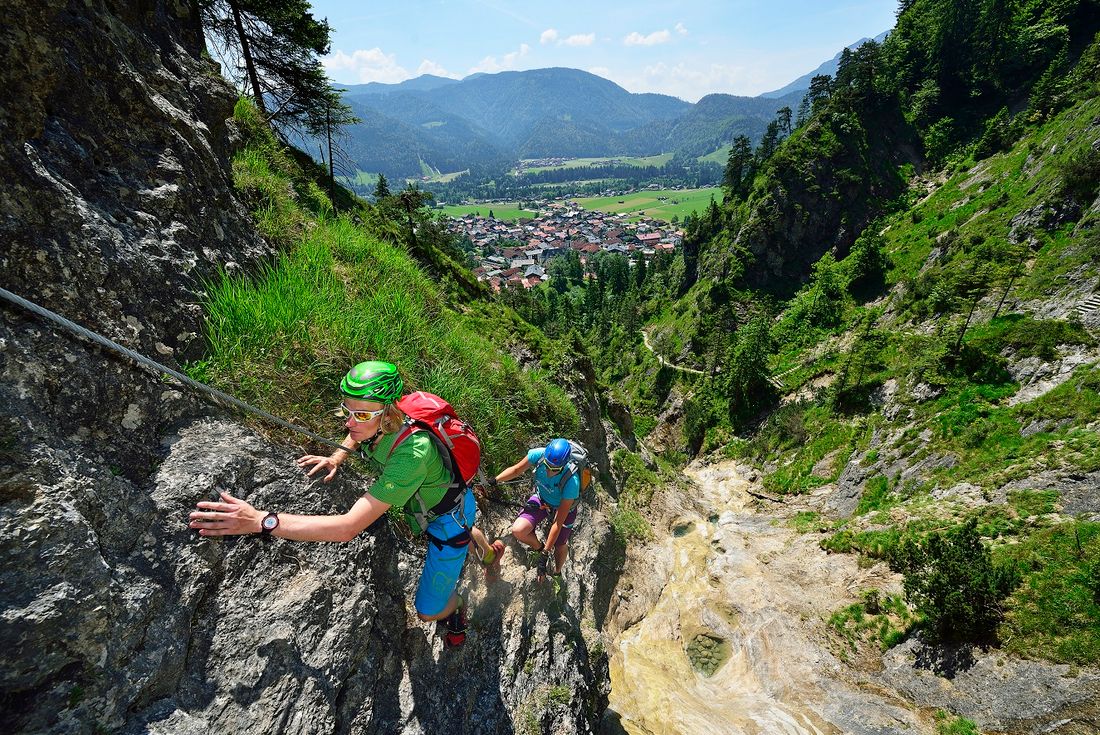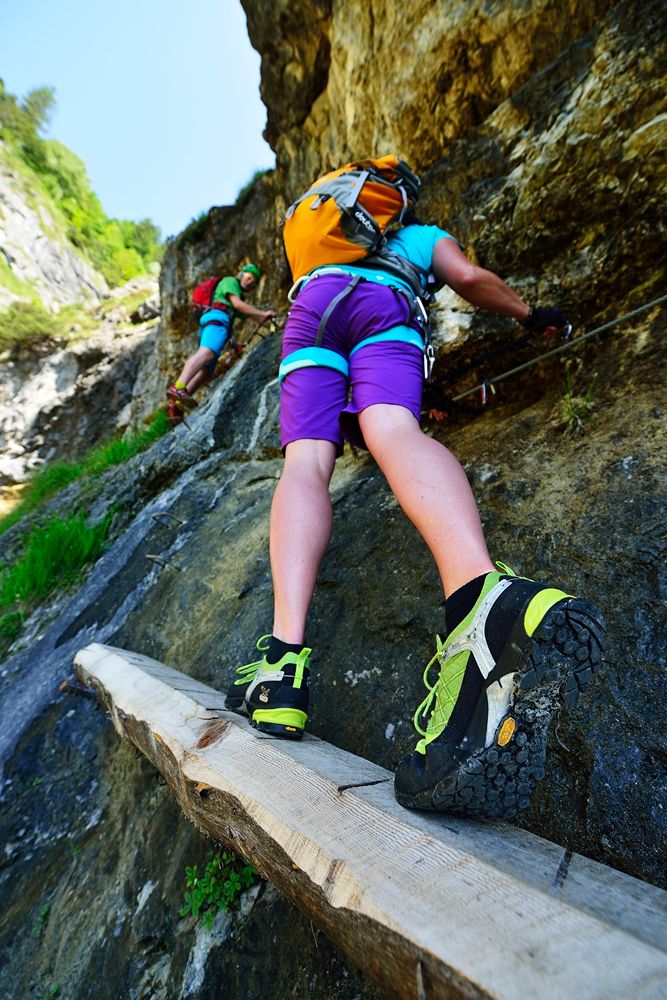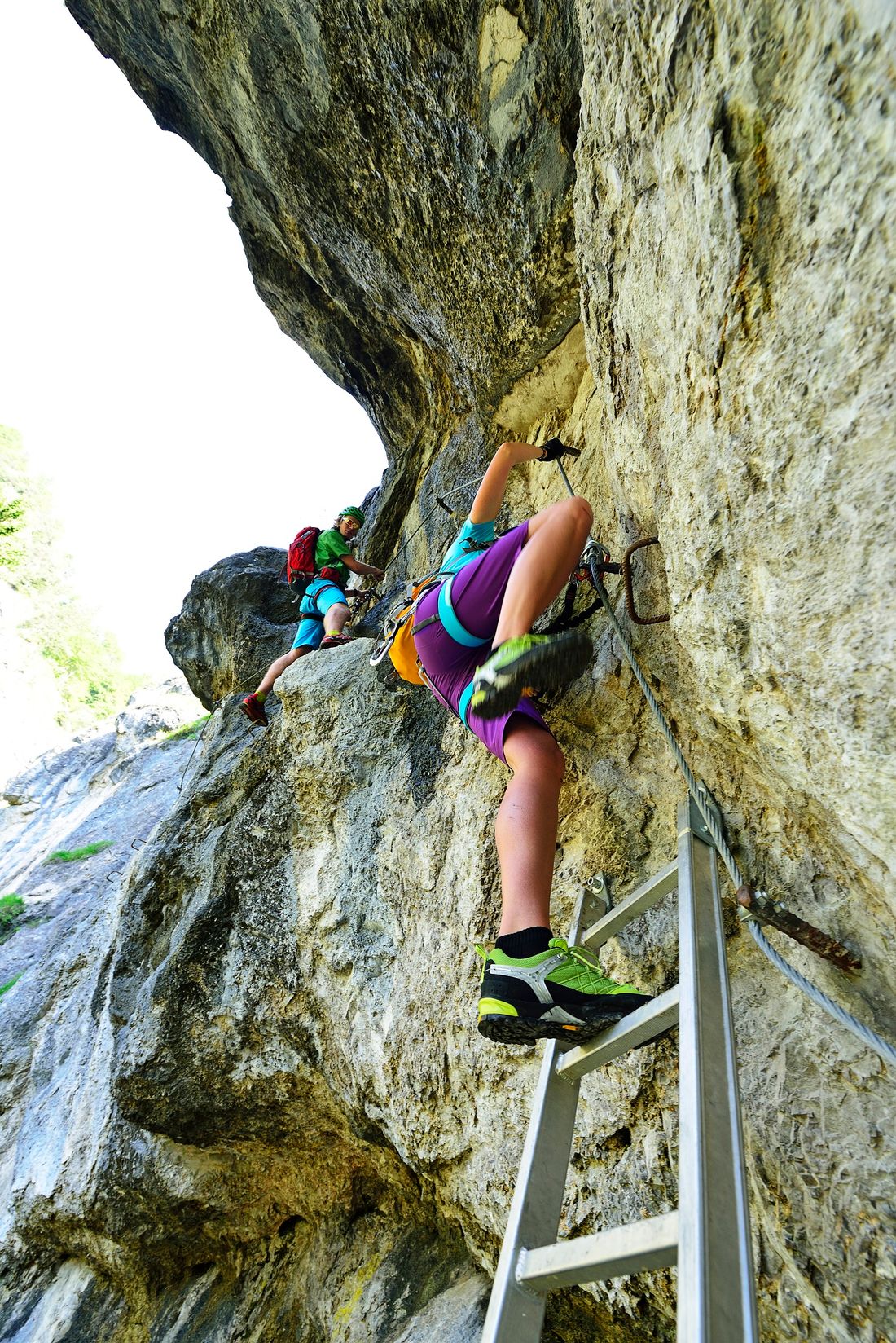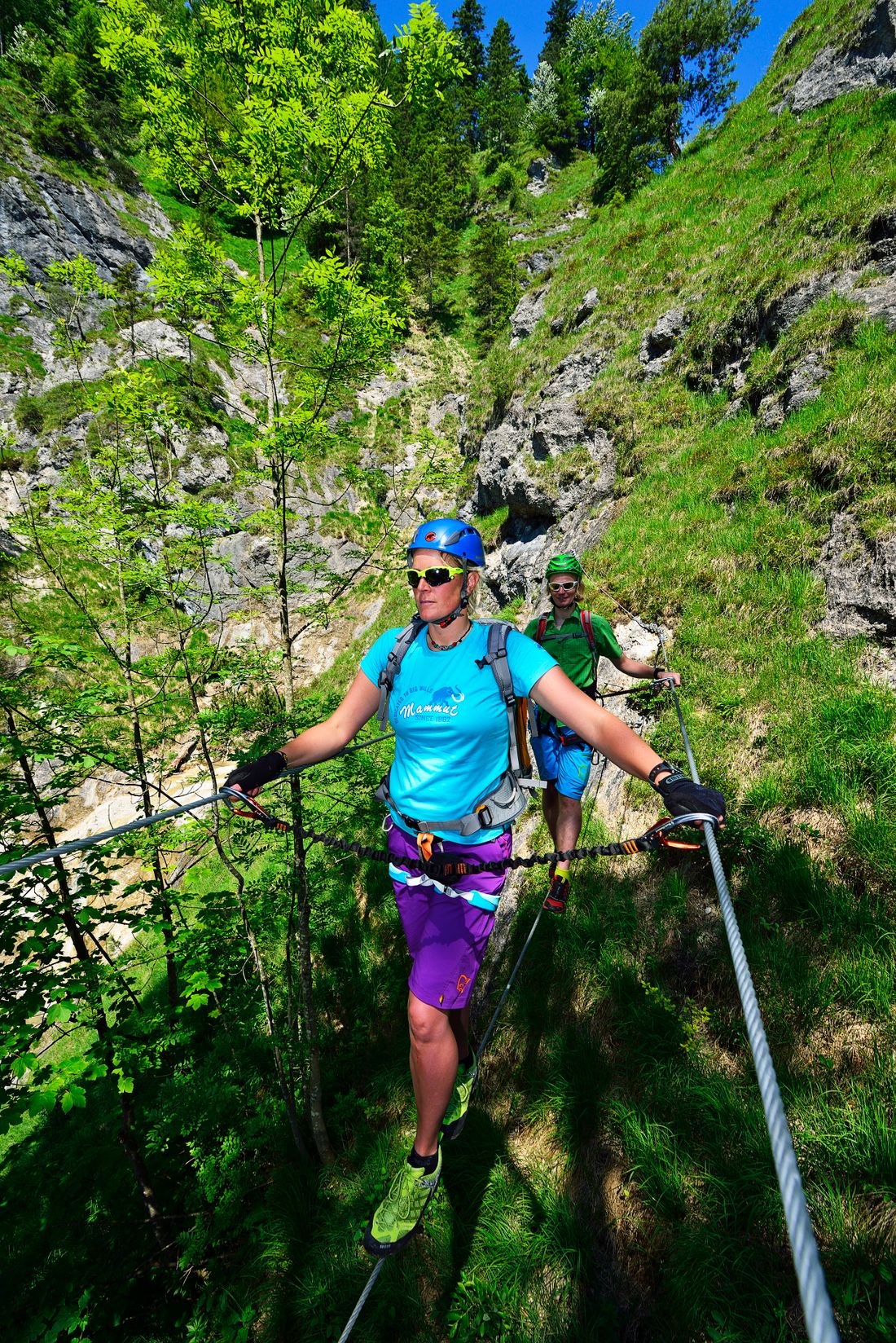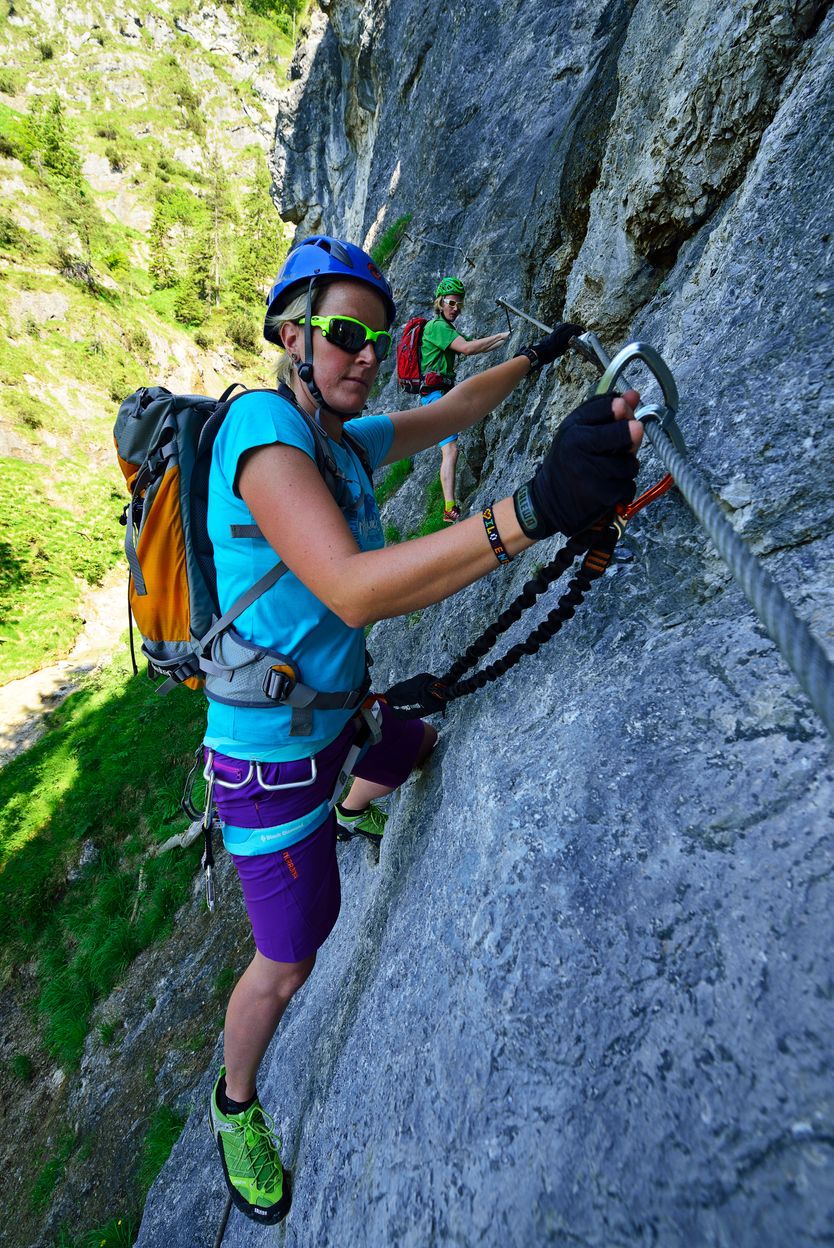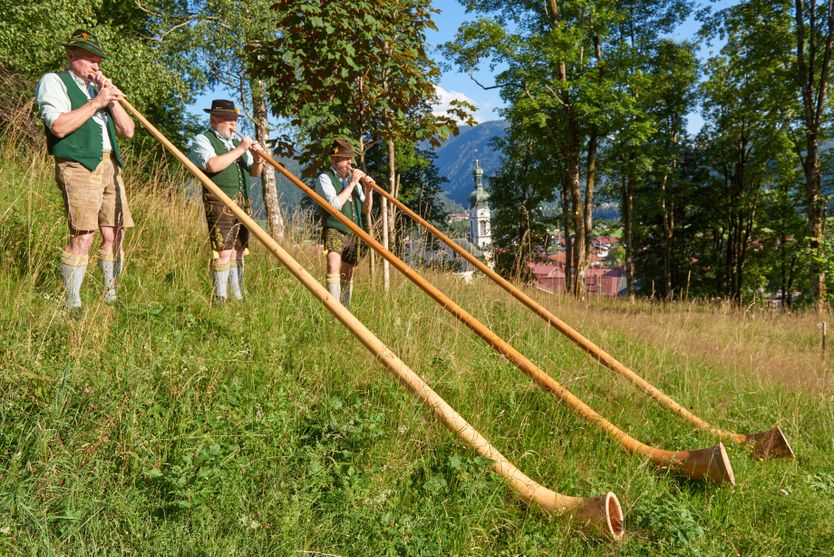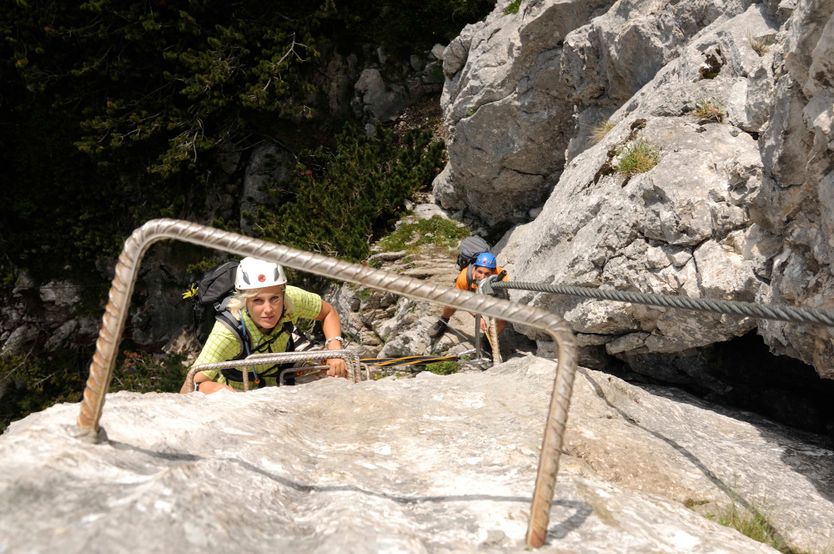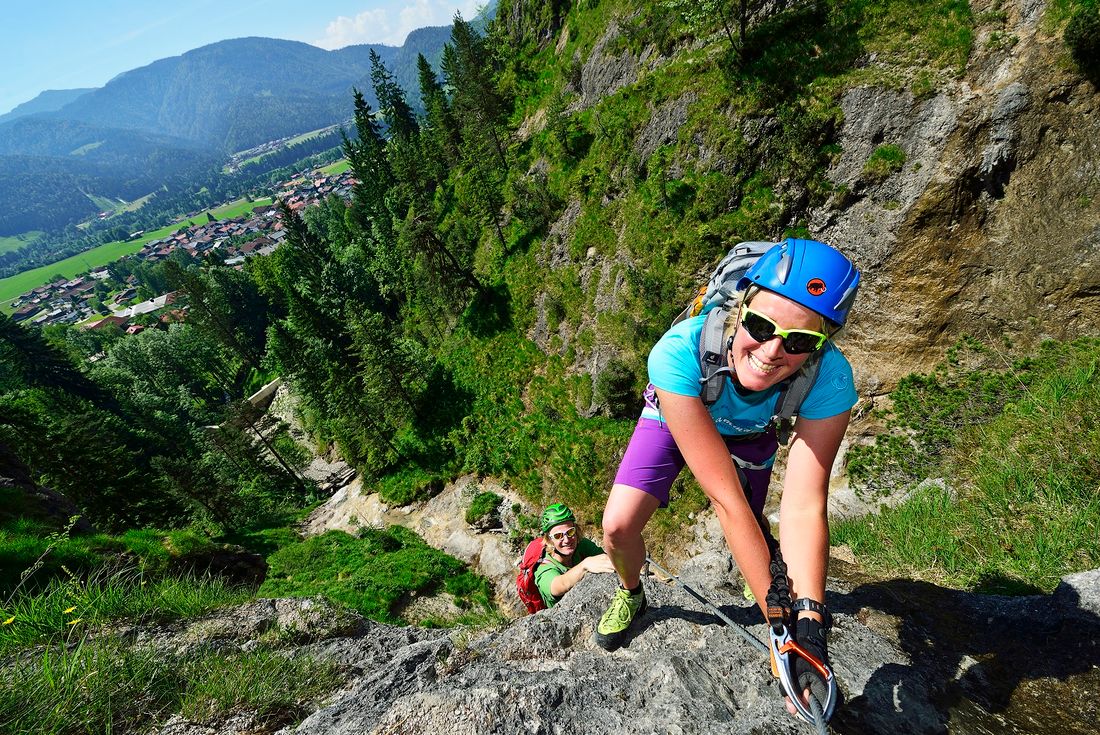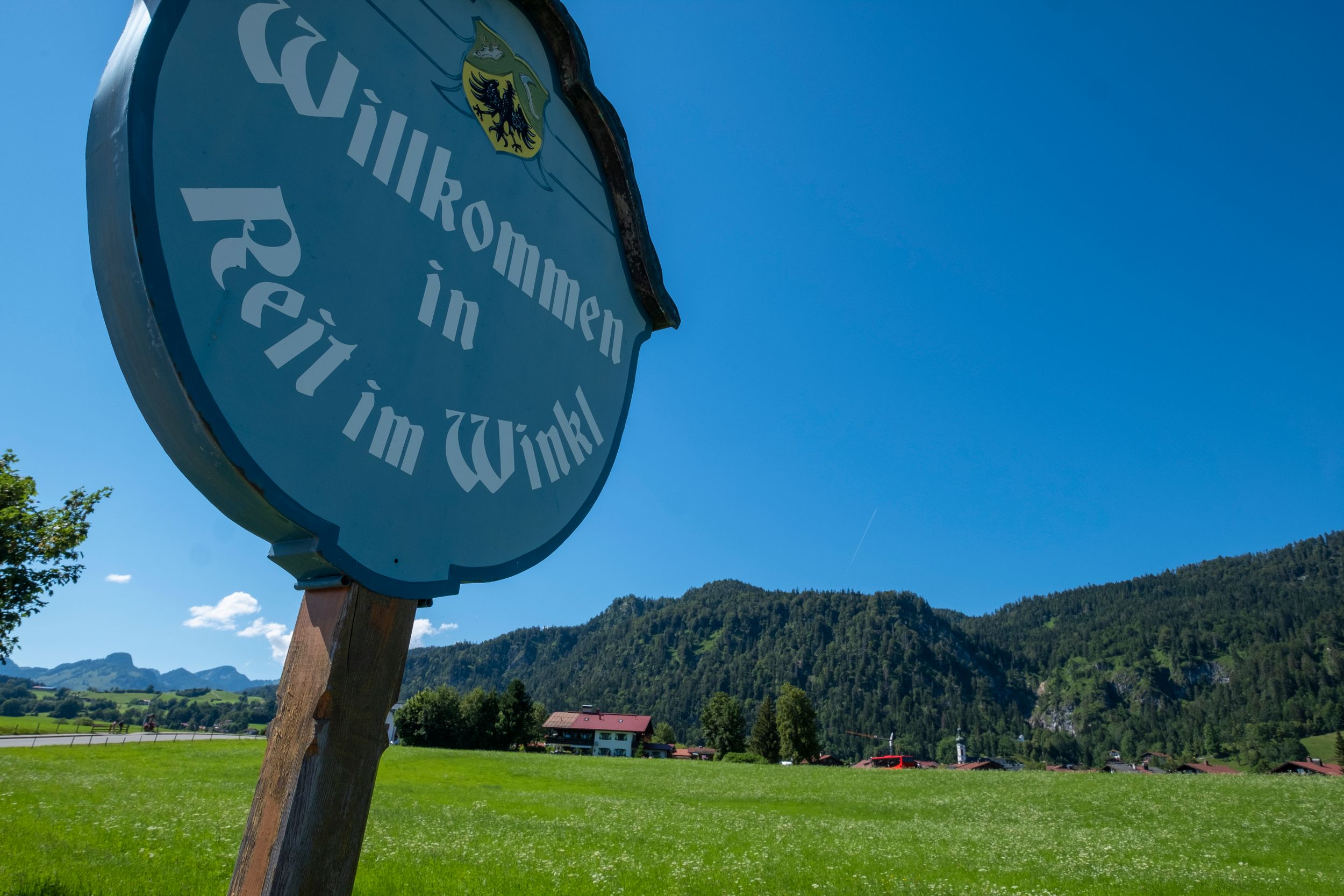Interview with a via ferrata expert
Interview with Dipl. Ing. (FH) Volker Kron, from the TÜV-SÜD sports department, who checked and approved the Hausbachfall via ferrata in 2012:
Norbert Eisele-Hein: Mr. Kron, you oversaw the inspection of the Hausbachfall via ferrata in Reit im Winkl. How long does such an inspection take?
During this on-site inspection, the construction documents are checked and the via ferrata is climbed. On this basis, we create a test report and, if necessary, an acceptance certificate. This takes about 1 day.
NEH: What do you put to the test? Are there load tests and technical regulations ...
Here we are currently working with other associations and the Alpine associations as a basis (the standards committee is called CEN TC 136 WG5 PG1). And of course there are already a lot of specifications. The diameter for safety ropes, which are also used for locomotion, must be between 12 and 16 mm. The vertical distance between 2 anchor points of the safety rope fastening must not exceed 3 meters. The first anchor point after entering must be at a height of between 4.5 m and 5 m. The list is long ... and of course everything has to be securely attached and processed.
NEH: Have the inquiries for an expertise from the TÜV been increasing since the acceptance of the Hausbachfall climb?
Yes indeed. As I have heard, the Hausbachfallsteig is very popular and demand is increasing here too, because it can also be marketed very well for tourists.
NEH: How long did your ascent of the Hausbachfall climb take or how often did you walk it?
It was a one-time inspection that lasted approx. 4 hours, we also check the construction documents in detail beforehand.
NEH: What did you particularly like about it?
Solid attachment points, professional execution, little ecological interference, spectacular scenery due to the beautiful waterfall, a great tree at the end - a wonderful via ferrata.
NEH: How do you see the development of via ferratas in the entire Alpine region?
Many via ferratas are unfortunately becoming more and more difficult and this also increases the risk of falling. In the past, falling was taboo on the via ferrata, but nowadays the approach is sometimes different. This also makes it necessary that the system is 100% reliable.
NEH: Thank you very much for the interview.
